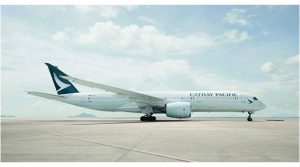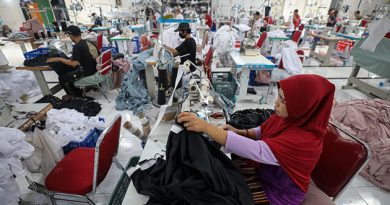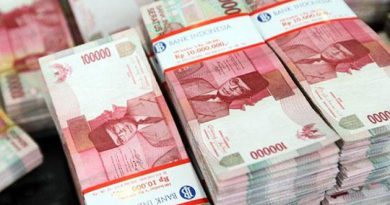Cathay Pacific Chief Executive Sees Core Profit Returning This Year

Hong Kong’s Cathay Pacific Airways expects its core airline business, which has been operating at a loss, to swing into the black next year as a turnaround plan bears fruit, the carrier’s chief executive said on Wednesday.
The improvement will be driven by a combination of stronger passenger and cargo markets, cost-cutting measures, a more fuel-efficient fleet, better fuel hedges and revenue gains from new long-haul routes, chief executive Rupert Hogg told Reuters.
“There is no one silver bullet,” he said Singapore. “There are just lots and lots of small things.”
Poor fuel hedging bets and fierce competition from mainland Chinese and Middle East rivals has hurt Cathay, pushing it into losses for the past two years and forcing the airline to undertake a three-year turnaround programme. Cathay’s top management team did not receive bonuses in 2017.
The airline last year said it would target HK$4 billion (Dh1.87bn) in cost savings as part of the turnaround, which includes more than 740 individual measures, such as adding economy class seats in its Boeing 777 jets.
The main goal is to keep unit costs, excluding fuel, flat over the three-year period, while also driving up revenue by adding capacity, Mr Hogg said.
Cathay will add around 4 per cent annual capacity with the launch of new routes from its Hong Kong hub to destinations like Brussels, Dublin, Washington DC and Cape Town that are not flown by rivals, the CEO added.
Long-haul capacity is growing faster than short-haul, given the popularity of Hong Kong as a hub for passengers flying from markets like India to the west coast of North America, he said.
Cathay reported a HK$792 million profit in the second half of 2017, but that was driven by earnings from “associates” such as its stake in Air China and a cargo joint venture rather than the airline’s performance.
It reported a net loss for the full year, its biggest in almost a decade. Analysts expect the company to post an overall profit of HK$1.2bn in 2018 and HK$4.1bn next year.
Cathay has set a 2019 target for a higher return on capital employed versus weighted cost of capital, including associates.
“But actually we’d like to be able to do that for the airline itself,” Mr Hogg said of the return target.
“That implies profitability in 2019.”
The core airline last reported a profit in 2015.
He said the cargo market, which helped fuel Cathay’s second-half improvement in 2017, remained strong despite the risk of a looming trade war between the United States and China.
“We don’t want a trade war,” he said.
“But at the moment we don’t see any physical manifestations coming through from some of the rhetoric.”
Cathay named Mr Hogg as its chief executive in April last year, replacing Ivan Chu.
Mr Hogg, 55, chief operating officer since March 2014 and a 30-year veteran at parent Swire Group, took over on May 1.
Last month Mr Hogg told The South China Morning Post Cathay plans to cram 10 per cent more passengers into economy class, adding one more seat to the existing nine per row, as Hong Kong’s flagship carrier tries to reverse its loss-making operation.
The airline, which lost HK$575 million last year, will embark on a three-year overhaul of economy class, adding extra seats on Boeing 777-300 planes from the middle of next year.
Legroom will remain at 32 inches, but passengers with bigger frames will want to note that the width of each seat will shrink by 1.3 inches to 17.2 inches.
Mr Hogg tried to put a positive spin on the impending overhaul, promising to deliver a “great in-flight experience”.
New seats will have a bigger 12 inch in-flight entertainment (IFE) screen – with the IFE box hidden inside chairs and not taking up legroom, plus more personal storage and Wi-Fi is also set to be added to planes.
On the comfort side, the newly designed seats would be smaller but have more comfort and better padding, plus have supporting headrests to benefit sleeping passengers, he said.
“We will be able to make a great product because seat technology has changed so much,” Mr Hogg told the Post. “We spend a lot of time sweating the details in every cabin and we will design a product that is really good value for money.”
Some 48 long-haul Boeing aircraft will be fitted with either 19 or 28 extra economy class seats each to accommodate 296 or 368 travellers. Each of Cathay Pacific’s 17 short-haul jets will get 40 extra seats to fit 438 travellers.
While Hong Kong International Airport is expected to be unable to add new flights by the end of the decade, Cathay Pacific’s denser economy class cabins will fly an extra 1.4 million passengers per year.
“It gives us a big productivity boost because we have more take-offs and landings with extra seats but the same number of aircraft, and the seat cost per mile will go down,” Mr Hogg said.
In addition to taking delivery of new aircraft after 2020, Cathay Pacific will increase seat capacity by up to 5 per cent annually until the third runway opens in 2024.
A majority of airlines in the Middle East, North American and European have adopted a high density economy seating arrangement including Emirates, Qatar Airways, Air France and American Airlines.
Courtesy : The National
Photo : Great Deals Singapore
[social_warfare buttons=”Facebook,Pinterest,LinkedIn,Twitter,Total”]



